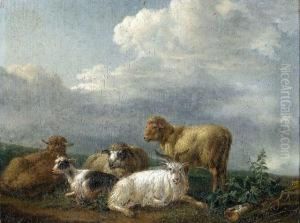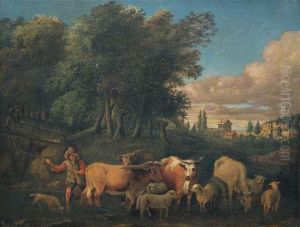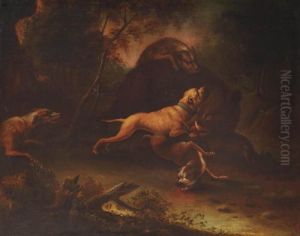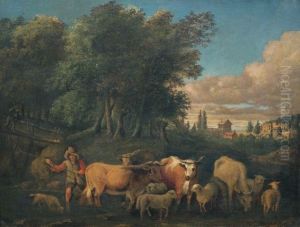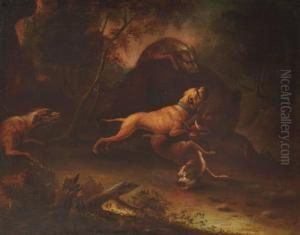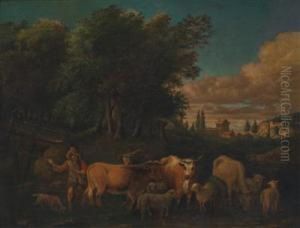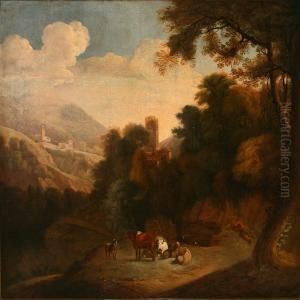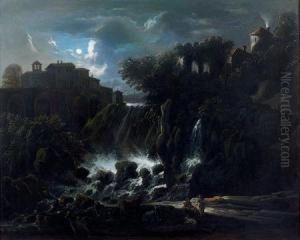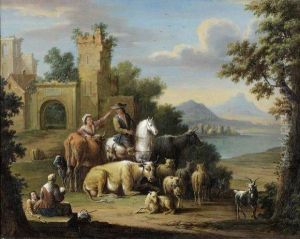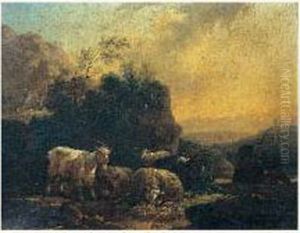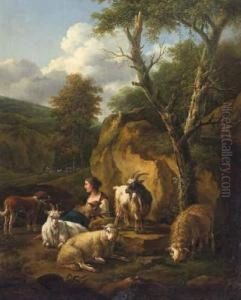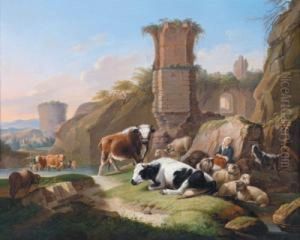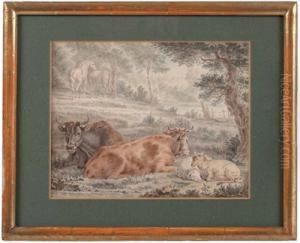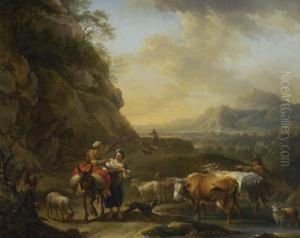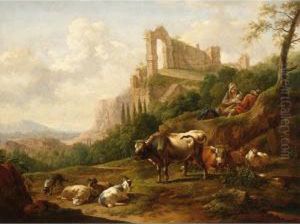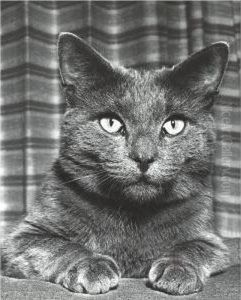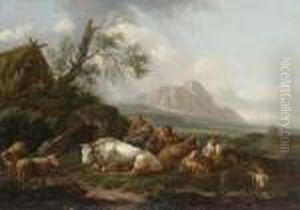Joseph Rosa Roos Paintings
Joseph Rosa, also known as Joseph Roos, was an 18th-century German painter renowned for his animal paintings, particularly those depicting livestock and wild animals in landscape settings. Born in 1726 in a family with artistic roots, Joseph was the son of the painter Philipp Peter Roos, also known as Rosa da Tivoli, and the grandson of the Flemish artist Johann Heinrich Roos. It was within this artistic environment that Joseph honed his skills and developed a style that was influenced by his father's work but also distinct in its own right.
Joseph Rosa's career unfolded against the backdrop of the European Enlightenment, a period characterized by a surge in scientific interest, including the study of animals and nature. His works often reflect this zeitgeist, capturing animals in their natural habitats with a keen eye for detail and a sense of the animals' character and mood.
Throughout his career, Joseph Rosa was active in Italy, particularly in Rome, where his family had established a name for themselves in the art world. He became a member of the prestigious Accademia di San Luca in Rome, an acknowledgment of his artistic achievements and reputation. In addition to animal subjects, Rosa also painted religious and mythological scenes, although these are less well-known and less celebrated than his animal pieces.
Rosa's paintings were admired for their realistic portrayal of animals, set against idyllic, though carefully constructed, landscapes. He had a talent for capturing the texture of fur and the play of light and shadow, which brought his animal subjects to life on the canvas. His work was highly sought after, and he received commissions from prominent patrons, which helped to solidify his position as a leading animal painter of his time.
Joseph Rosa's legacy is somewhat overshadowed by the renown of his father and grandfather, but his contributions to the genre of animal painting are significant. He passed away in 1805, leaving behind a body of work that continues to be appreciated for its artistic merit and its depiction of 18th-century European attitudes towards nature and animals.
